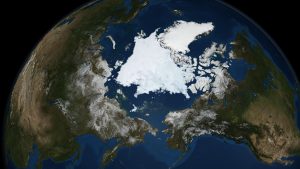 For this lesson plan I would like students to gain an understanding of how both western and indigenous cultures use observation and experimentation as a basis for their scientific methods. My essential question is basic: What methods do people use to find solutions to problems? This lesson is most closely tied to the Culturally Responsive Curriculum Standard B: A culturally-responsive curriculum recognizes cultural knowledge as part of a living and constantly adapting system that is grounded in the past, but continues to grow through the present and into the future. In essence this lesson is all about “methods of adaptation”.
For this lesson plan I would like students to gain an understanding of how both western and indigenous cultures use observation and experimentation as a basis for their scientific methods. My essential question is basic: What methods do people use to find solutions to problems? This lesson is most closely tied to the Culturally Responsive Curriculum Standard B: A culturally-responsive curriculum recognizes cultural knowledge as part of a living and constantly adapting system that is grounded in the past, but continues to grow through the present and into the future. In essence this lesson is all about “methods of adaptation”.
Unfortunately, a wealth of indigenous wisdom has been lost only because they weren’t first with guns, germs and steel. So, I highlighted some of that lost wisdom in my lesson plan, mostly through the work we read in class by Angayuqaq Oscar Kawagley and Ray Barnhardt.
In this lesson I tied the western scientific method to the way indigenous cultures perform their science while highlighting the example of how Inupiat culture has adapted to climate change. In the first part of the lesson I bring in an elder(s) or community member(s) to talk about two main questions: 1. How they pass down knowledge? How do they make sure it is accurate? 2. What environmental changes have they have seen in the arctic. How have they adapted to those changes. For the second part we looked at the essential question of What methods do people use to find solutions to problems? I touch on the fact that we all use the scientific method for finding solutions to our conundrum s. The scientific method is not rocket science but can be used to build a rocket! Click on the link below for a pdf of my full lesson plan.
s. The scientific method is not rocket science but can be used to build a rocket! Click on the link below for a pdf of my full lesson plan.
The stew is brewing. I like the layout of the lesson plan and the use of earth image as well as the color flow chart. Easy to follow. Good stuff.
Tyson-
You have a lot of good stuff in here. Your essential question is indeed, essential. What if you started out with the ketchup bottle and have them experiment with that. Then move on to bigger issues….ok you figured out how to get some slop for your fries but now how are you going to figure out how to save the earth from global warming! Can we apply the same methods that we used with our ketchup bottle? Good Stuff!